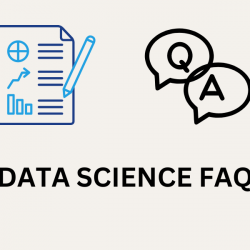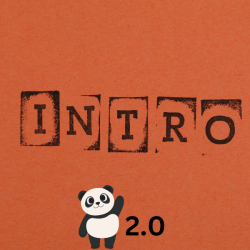15 Points Why You Should Learn Julia


15 Points Why You Should Learn Julia
Powerful and Efficient Programming Language
This open source, high performance language is becoming increasingly popular in the world of computer science due to its many benefits. Here are fifteen reasons why you should consider learning Julia:
- Easy to Learn Syntax Julia has a very straightforward syntax that makes it easy to start writing code. Plus, this concise language also has many similarities to other languages like Python and MATLAB, making it simpler for developers who already know one or both of these languages to transition into Julia.
- High Speed & Performance Programming in Julia is fast and efficient: it can improve your speed by up to 200 times compared with traditional programming languages such as C++ or Java! Such speed is attributed to the fact that Julia is a compiled language rather than an interpreted one, allowing it to compile code quickly into machine instructions that can be processed quickly by the computer.
- Open Source & Free To Use One great thing about Julia is that it’s open source and free for anyone who wishes to use it. This means that there are no restrictions on who can access or learn the language – anyone can do so! Furthermore, since lots of people are utilizing the language, there’s always new content being released or updated to help users learn even more about the language and its functionality.
- Dynamic-Typing-Unlike most other programming languages, Julia does not need parameters when declaring variables; instead, you simply assign values and types will be automatically inferred at runtime by the compiler. Data Science Course in Delhi
Growing Popularity
- Open source: Because the Julia language is open source, there are no license fees associated with it—meaning anyone can download and start experimenting! It also means that the platform has a vibrant community of contributors who help make the language better every day.
- Easy learning curve: Compared to many other high level languages, Julia has a much gentler learning curve which makes it easier for new developers to pick up and start using. This means that when they need to work on something else, they can easily transition back to writing in Julia without having to relearn all of the syntax again.
- High performance computing: The main feature that sets Julia apart from other languages is its ability to produce high performance computing results without sacrificing readability or expressiveness of code. This allows developers to take advantage of modern hardware architectures while still maintaining an efficient codebase.
- Interoperability with other languages: Another key feature that makes Julia attractive is its ability to interoperate with other popular languages such as Python, MATLAB®, R®, Java®, and C/C++®. This means that developers don’t have to completely rewrite existing codebases but can instead incorporate their existing knowledge into their new projects with relative ease.
Easy to Learn Syntax
- Speed: Julia code runs fast, in many cases faster than code written in other languages such as C++ or Python. It’s also easy to parallelize code, meaning computation times go down even further. Data Analyst Course in Delhi
- Flexibility: You can easily switch back and forth between Julia and other languages such as Python or R without having to rewrite your programs from scratch. That means you can use all the packages and libraries available on these platforms to do more advanced work.
- Integration: Julia supports multiple computing platforms including GPUs, distributed computing, Windows/Linux/MacOS machines, Docker containers, and cloud services like AWS or Azure. This makes it simpler to run computations on various different hardware configurations without having to worry about compatibility issues between them.
- Power: Julia has powerful numeric capabilities that make it ideal for handling complex numerical operations like linear algebra or statistical modeling with ease and efficiency.
- Compiled language: Unlike some interpreted languages such as Python or R which run slower due to their need for translation before execution, Julia compiles its source code directly into native machine code making it much faster than its counterparts.
- Easy to read syntax: The syntax of Julia is based on familiar language structure so even if you are new to programming it won’t take long before you can read and write in the language.
Performance Comparable to C/C++ and Fortran
Here are the top 15 reasons why you should learn Julia:
- High Level Language Julia is a high level language with an easy syntax, making it relatively simple to learn compared to lower level languages like C/C++ and Fortran. Plus, its interactive environment allows for dynamic and fast prototyping of algorithms.
- Fast Speeds Julia encourages expressiveness and readability of code without sacrificing any speed or performance. You’ll find it performs just as quickly as lower level languages like C/C++ or Fortran.
- Flexible & Adaptive Julia’s capabilities are designed to be flexible and adaptive enough to handle almost any type of coding project from data science to web development.
- Platform Independence You can use Julia on multiple platforms including Windows, Linux, and MacOS operating systems so you don’t have to worry about platform compatibility issues.
- Compiled Natively When you compile code using Julia it compiles natively so you get high performance speeds without any extra interface layers to slow down your programs.
- Open Source Codebase The source code for the entire Julia language is available online so developers can easily build on the existing version or create their own versions of the language if needed . Data Science Institute in Delhi
Open-Source Platform
It’s no secret that the world of programming is constantly evolving and a hot topic right now is open source platforms. If you are considering learning to program, Julia is an open source platform worth giving a shot. Here are 15 reasons why you should learn Julia and why it has become increasingly popular in the programming world.
1) OpenSource: Unlike other platforms, Julia is an open source platform, meaning that it can easily be integrated into other development programs and its source code can be modified by anyone. This not only saves costs but also enables developers to use the same code for various projects without having to recreate them from scratch.
2) High Performance Computing: Developed as a language with high performance computing abilities in mind, Julia has been designed with excellent speed capabilities allowing large datasets to be processed quickly and efficiently.
3) Dynamic: As a dynamic language, Julia can handle sophisticated tasks with ease while at the same time being easy for users to learn and use. It does this by handling complex tasks ranging from scientific computing to web app building while still simplifying development processes.
4) Features: One of Julia’s best features is its ability to support dynamic typing which allows user defined types like struct type collections or type hierarchies which provides numerous benefits like improved scalability and flexibility when writing complex applications.
5) Easy Code Readability: One of the key advantages of using Julia over other programming languages is its simple syntax which makes it easier for others to read and understand code even if they do not have experience in programming themselves.
Supported by Major Cloud Providers
- Cloud Computing: With the advent of cloud computing, major cloud providers such as Amazon Web Services (AWS), Microsoft Azure, and Google Cloud Platform (GCP) offer powerful infrastructure that supports Julia development and deployment.
- Major Providers: As one of the major cloud providers, AWS provides its customers with various services that are optimized for Julia, such as Amazon EC2 instances and Amazon S3 storage, along with other InfrastructureasaService (IaaS) offerings.
- Benefits Julia: In addition to being accessible by major providers, Julia also benefits from strong community support as well as comprehensive libraries for a wide range of applications such as mathematics, scientific computing, data mining, machine learning, artificial intelligence (AI), robotics, natural language processing (NLP), bioinformatics, systems engineering and more.
- Versatile Language: The versatile nature of the language enables developers to create high performance applications in an intuitive manner without dealing with complex concepts such as memory management or low level optimization techniques that are usually associated with compiled languages like C++ or Java.
- Easy to Learn: Due to its simple syntax and clear structure designed for expressiveness, it is relatively easy for newcomers with some general programming knowledge to learn Julia quickly compared to traditional compiled languages like C++ or Java.
Robust Package Manager
- Robust Package Manager: The Julia package manager handles the installation, updating, and managing of packages with ease. It downloads packages from the public repository and can automatically detect dependencies without any manual intervention or conflict resolution.
- Julia Programming Language: The package manager integrates seamlessly with the Julia programming language, which allows developers to create powerful applications in record time yet with minimal effort. This combination makes Julia a powerhouse among other programming languages.
- Package Development: Creating new packages is effortless with the help of the powerful tools provided by Julia’s package manager. Automated test suites and detailed documentation ensure that packages are up to par before they are released to the public repository.
- Automated Installation: Installing packages directly from the command line or via scripts is possible due to automated installation features within the package manager. It can also handle automatic updates at regular intervals for higher system stability and improved user experience.
- Dependency Resolution: Thanks to its dependency resolution ability, users do not have to manually track down new versions or update existing packages on their own as everything is handled by the package manager itself — giving them more time to focus on their development tasks instead of looking for solutions on how things can be put together properly.
Great for Data Science and Machine Learning
- Data Science – Julia provides an easy to use platform for working with data from various sources. It integrates well with existing code and packages developed in other languages like Python and R, allowing you to quickly analyze data sets with Julia.
- Machine Learning – The language is superbly suited for writing applications related to machine learning. Through its powerful and highly sophisticated syntax tools, you can write algorithms that learn from experience to become smarter overtime.
- Open Source – Being open source means that anyone can contribute to the growth of the language itself, as well as its associated packages. This ensures a constantly evolving platform that keeps improving over time thanks to the contributions of the wider community of developers and data scientists who use it each day.
- High Performance – The core of the Julia programming language is optimized for speed and performance when compared to other languages like Python or R. Its just in time compiler lets it execute faster than other interpreted languages by compiling code ahead of time into native machine instructions that can be run quickly on any modern architecture or device without sacrificing any functionalities.
- Dynamic Language – Unlike many other languages, Julia is designed with a dynamic type system which makes it easier to develop complex programs in less time as changes don’t need to be recompiled manually every time they’re made at runtime instead of compile time.
Supports Multiple Parallel Computing Platforms Section
- Flexibility: With support for multiple parallel computing platforms, you can run Julia on the most compatible platform available. This flexibility allows users to write code that is able to run anywhere from laptops to supercomputers.
- Compatible Platforms: Julia offers compatibility and support for many computing platforms, including Windows, Linux, and macOS.
- Community Support: The open source community provides excellent documentation, tutorials, and active forums for help with coding issues or questions you may have while learning the language.
- Fast Iteration: This language is developed for fast iteration – meaning code is compiled just in time for quick execution time while maintaining high performance across various computing devices.
- GPU Acceleration: Julia offers the power of GPU acceleration which helps with massive data processing operations requiring less time and resources to process the same amount of data compared to traditional methods without GPU acceleration assistance.
- Diverse Needs: If you’re looking to use the language for a range of purposes from scripting to web development or artificial intelligence/machine learning (AI/ML), Julia is an extremely versatile option with capabilities in each of these areas as well as many more.






Ingen kommentarer endnu